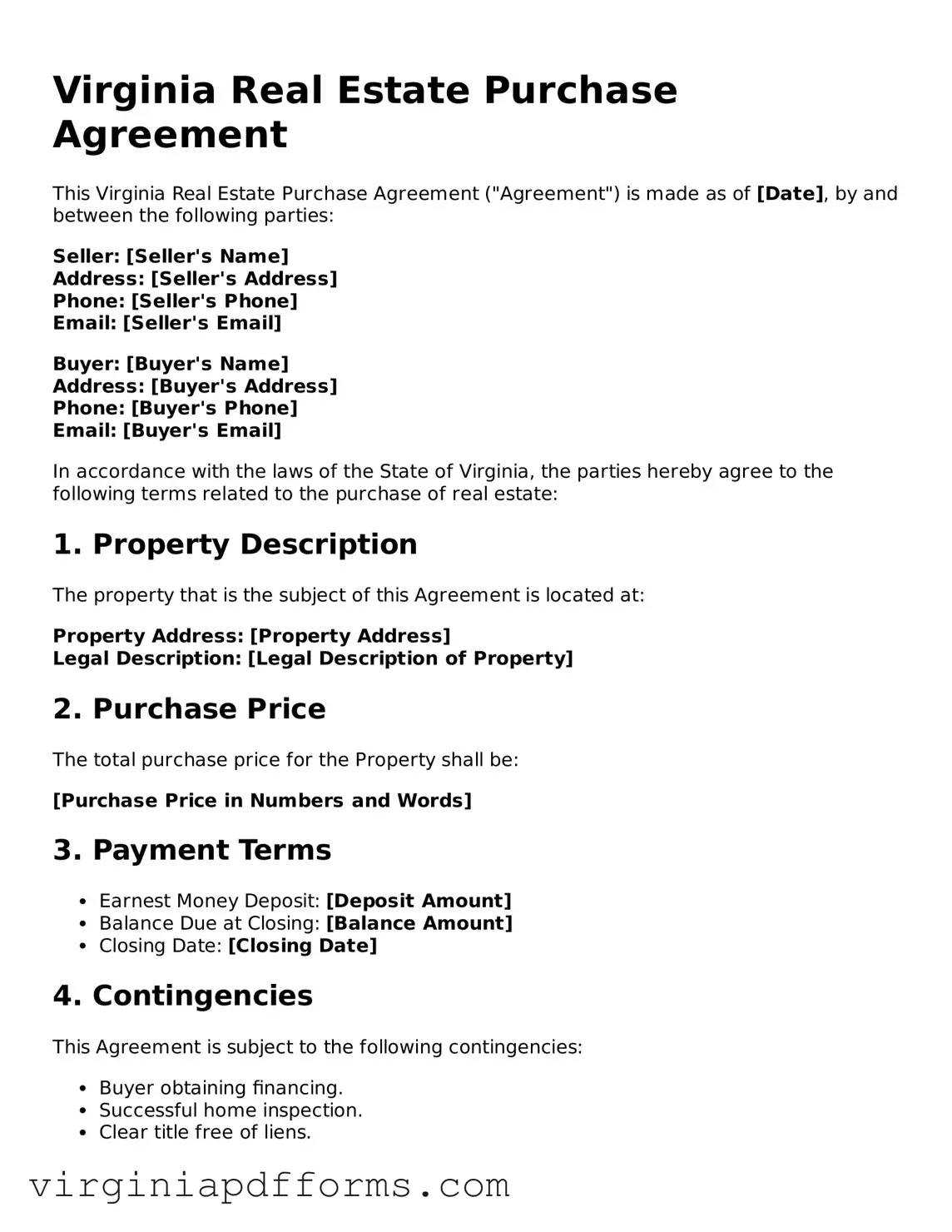Attorney-Approved Virginia Real Estate Purchase Agreement Document
The Virginia Real Estate Purchase Agreement is a legal document that outlines the terms and conditions for buying and selling real estate in Virginia. This form serves as a crucial tool for both buyers and sellers, ensuring that all parties are clear on their rights and obligations throughout the transaction process. Understanding this agreement can help facilitate a smoother real estate deal and protect your interests.
Access My Document Now
